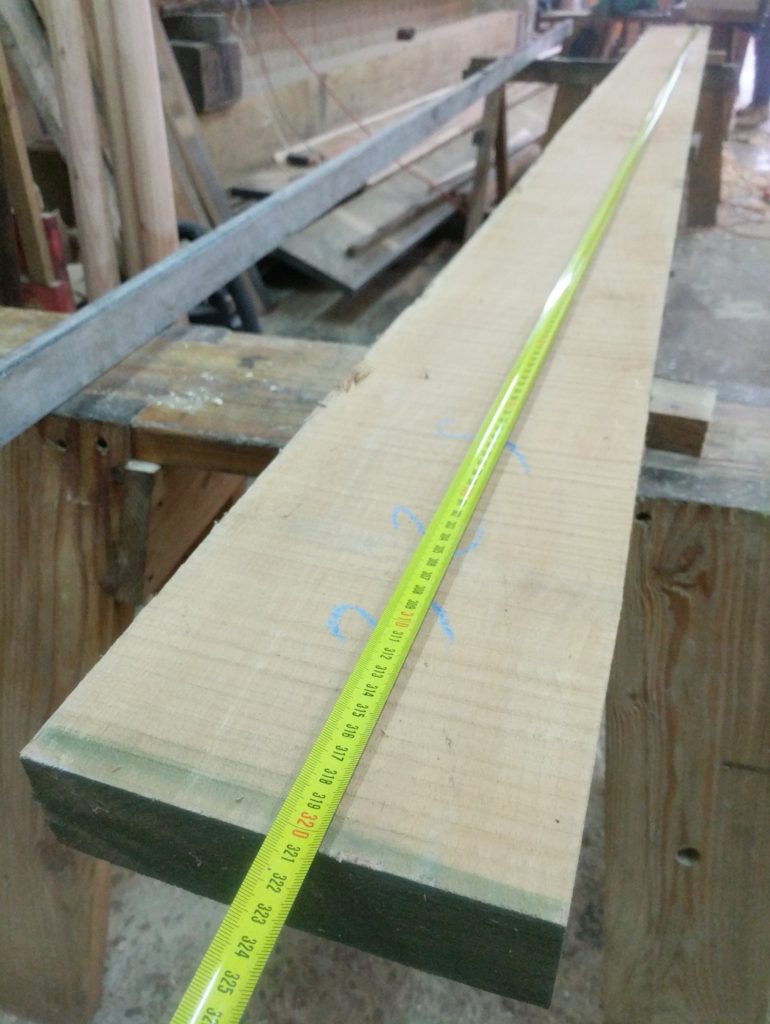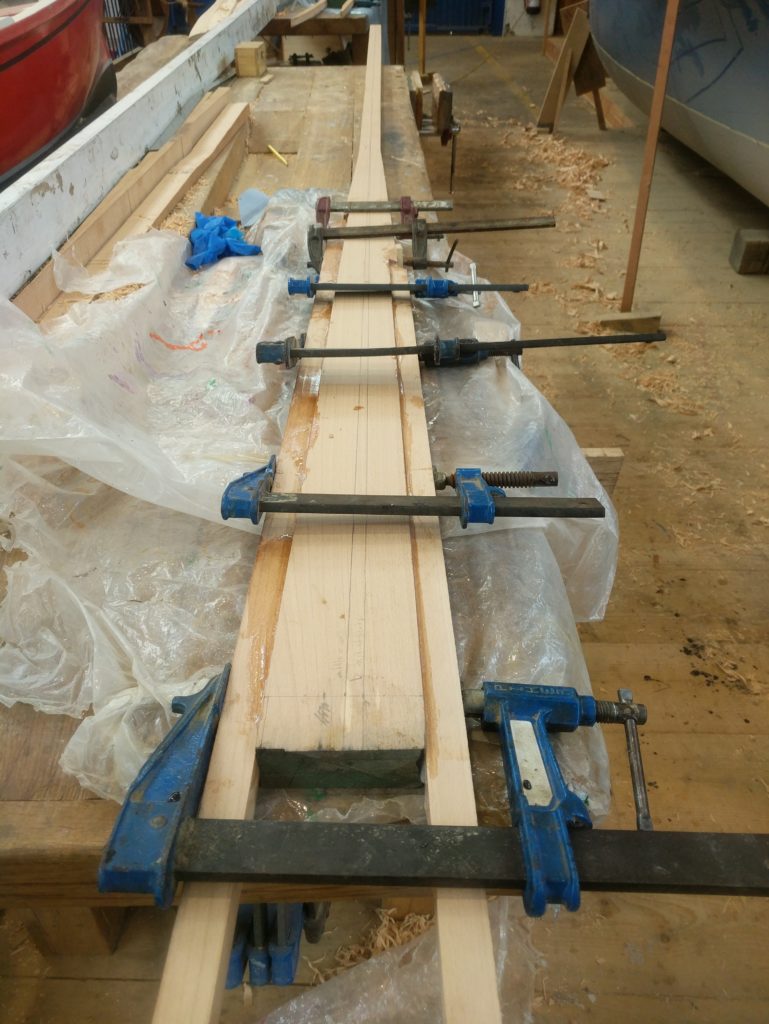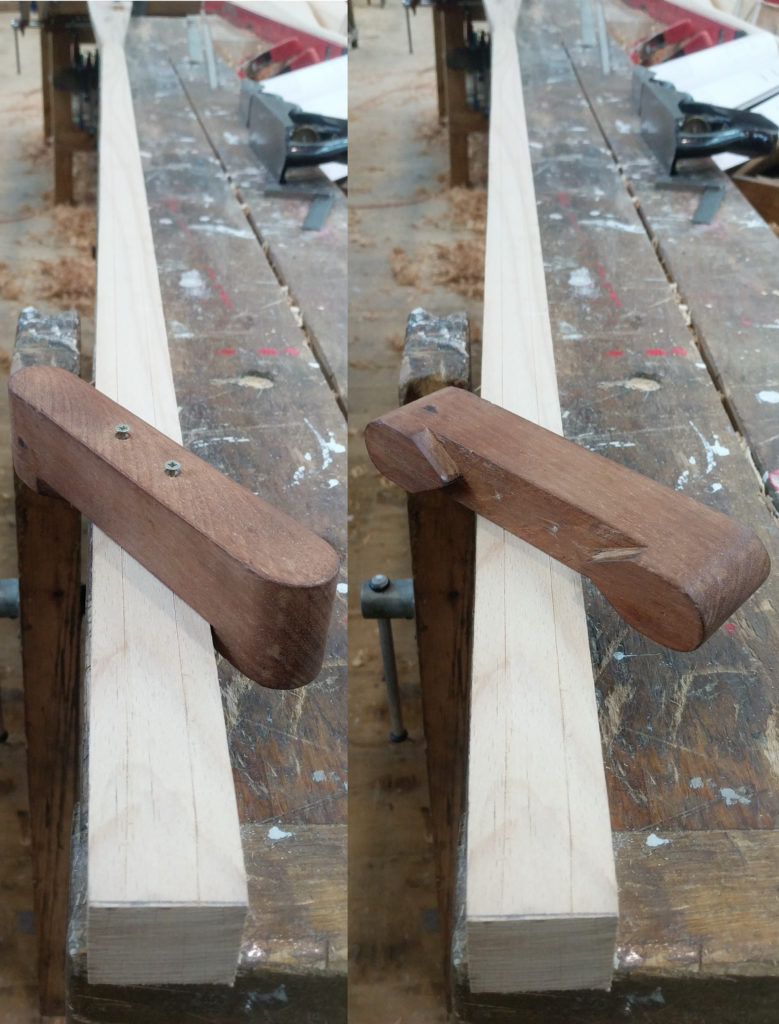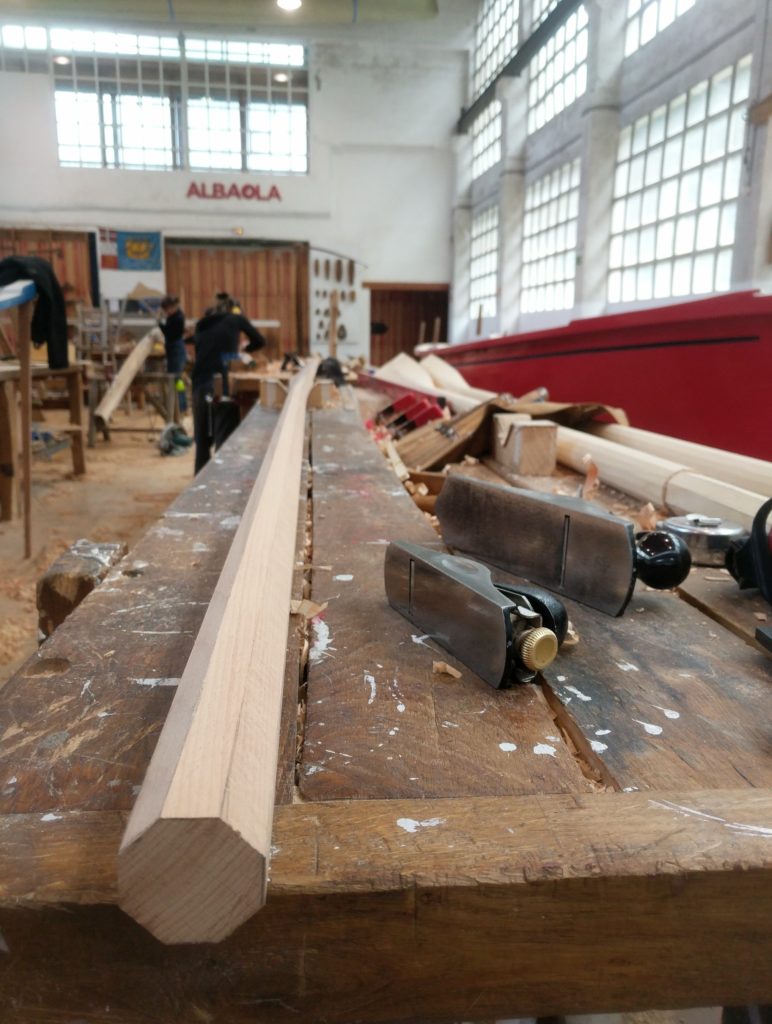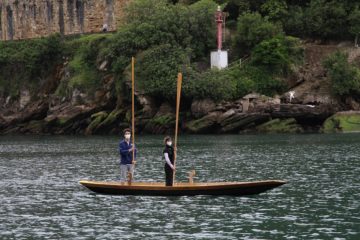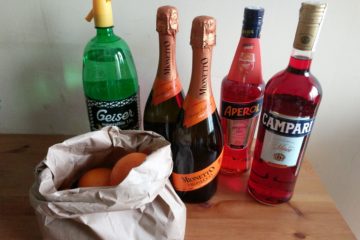Everything is going according to plan: after the forcole of last week, this week we made remi, the oars.
We couldn’t use Basque oars, of which we have aplenty obviously, because they are not the right shape and dimensions. After all, the Venetian rowing style is so inherently different: standing and facing forward, the rower needs a much lighter and slender oar.

In Venice, the artisan making oars is the same one making the oarlocks. Actually, it is called remer, i.e. oar-maker.
https://www.youtube.com/watch?v=rQ3yA_PxWbk
Since 1500, Venice made the oars for its galleys out of beech, sourced in the Cansiglio forests, on the Alps (https://en.wikipedia.org/wiki/Cansiglio).

Even though modern oars in Venice are made with a variety of different kinds of wood (with a preference for the exotic ramin for its straight and clear bole: https://en.wikipedia.org/wiki/Gonystylus), we decided to go for the traditional material, and started out with a single plank of kiln-dried beech (320x19x5cm).
Following step-by-step the process detailed in Gilberto’s book (which, by the way, is written in both Italian and English, and available here: http://www.veniceboats.com/it-pubblicazioni-catalogo-libri-forcole.htm) we marked out and cut the two oars.
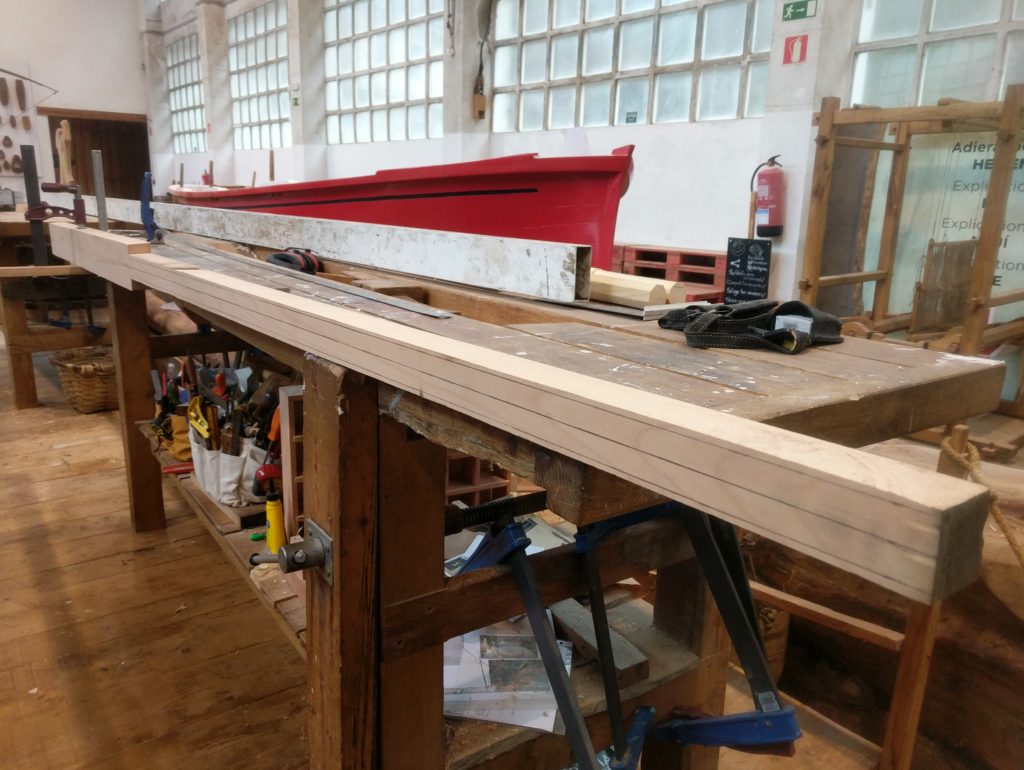
After planing the sides to the wanted dimensions, we cut the notches on the sides of the blade at 45°, and glued on the off-cuts we saved from the initial cutting at the band saw.
These side-strips have different purposes: their different lenghts indicate if the oar is for port or starboard (the long strip always faces forward), and in the case of fir oars, they are still made of beech, helping protect the thin blade from accidental hits. This is a common occurrence, in a city with narrow canals surrounded by brick-and-stone walls.
After the epoxy had cured, the shaping begun. The blade is asymmetrical in many ways: first of all, the tip raises from the horizontal line of the loom, in order to move more water. This is much more evident on modern scoop-oars, but that’s basically the same principle.
Secondly, the blade is rounded on the bottom, and has a spine on the top. This reinforces the blade, as much as folding a sheet of paper in half and then holding it as an inverted V makes it possible to keep it horizontal, without collapsing under its own weight.
Lastly, this spine is itself not centered on the blade, but more towards aft. This makes the center of gravity of the oar move aft as well, helping the rower with the peculiar movement Venetian voga requires.
With the help of a spar gauge I had built my first year here in Albaola, we marked the looms and went from square, to octagonal, to 16-sided, to circular. Of course this involves a lot of planing, look at Ioanna loading a full wheelbarrow with a day’s worth of shavings!
In case you where wondering where I got them from, here are the plans for the spar gauge:
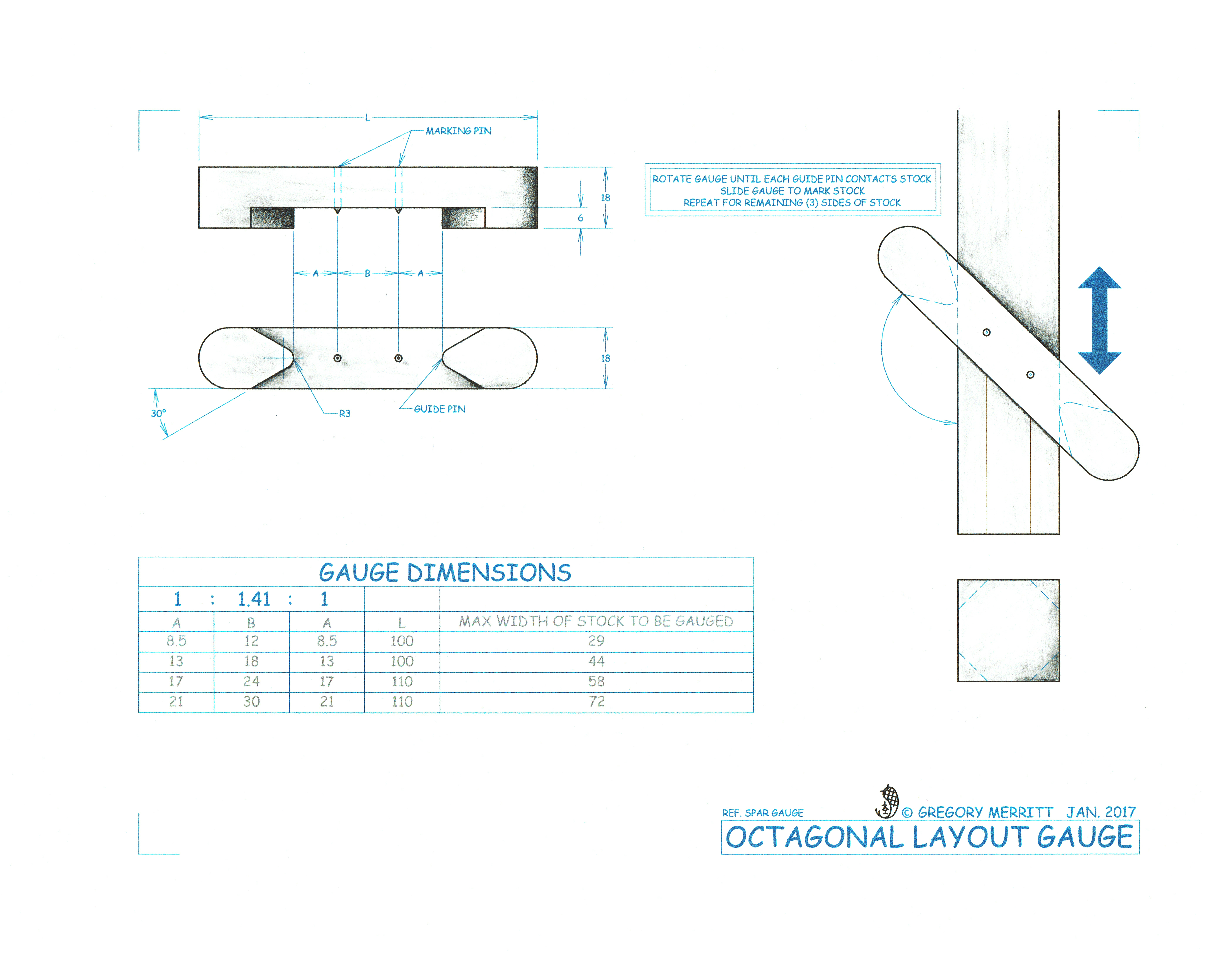
After some scraping and some more sanding with progressively higher grits (we went from 60 to 120, through 80 and 100), we marked the oars on the handle in the traditional way, in order to quickly distinguish which one goes forward and which aft.
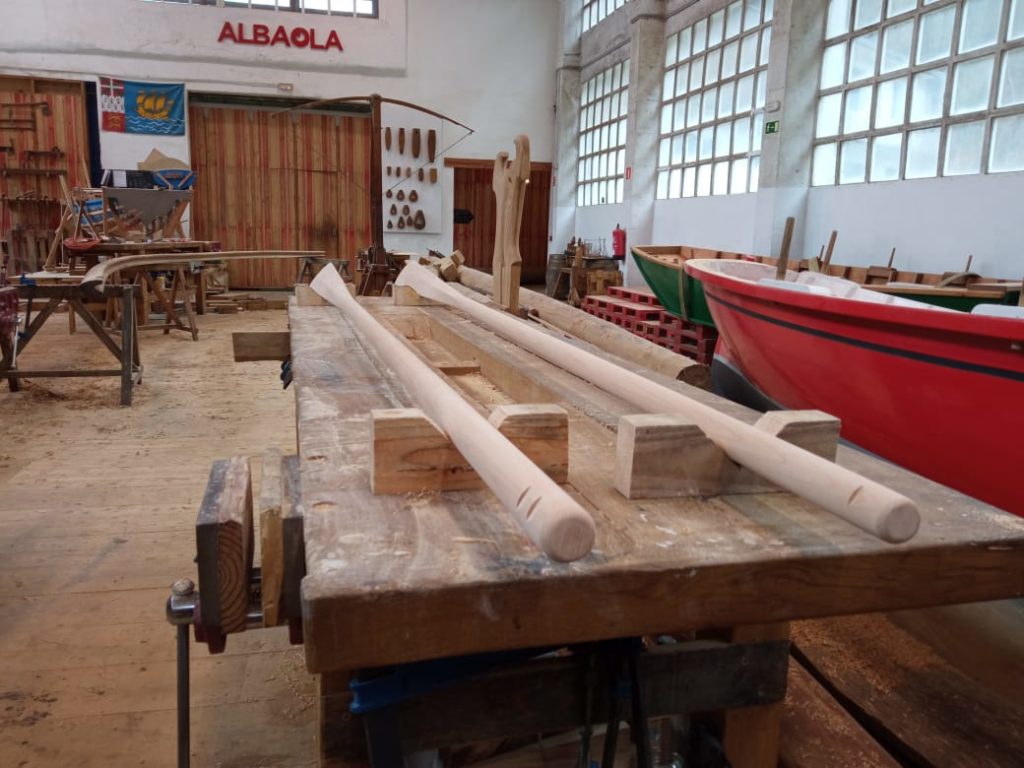
The whole process took us only a few days. As per the forcole, it took us less time than expected. Here you can see me enjoying my first alzaremi with the new oars.

Alzaremi (literally “oar-lifting”) is the traditional salute at rowing events and regattas in Venice. I can’t wait to be able to properly do it on the boat!
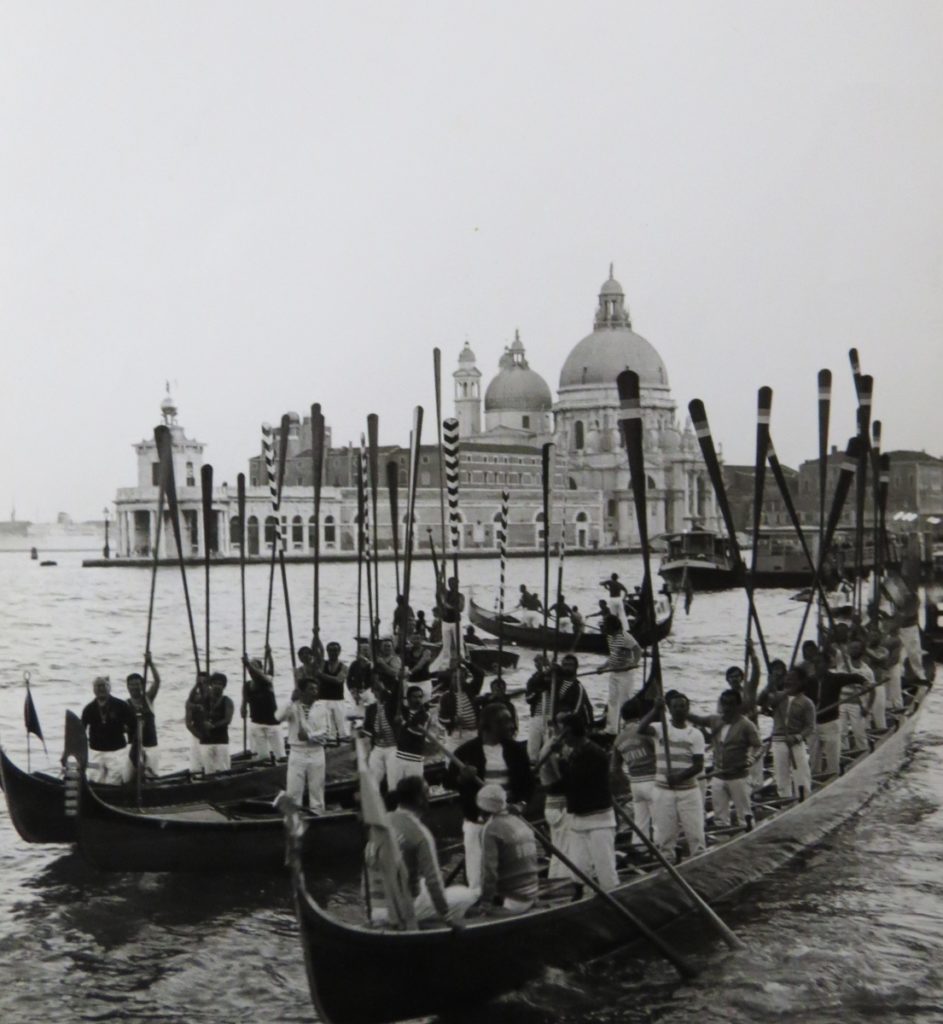
But we all know that an oar is not ready until it’s got oh so many coats of varnish. At the moment of writing, we only have three coats on, so this will go on for a while also next week…

Next month there will be a press conference to present the s’ciopon, so Ioanna an I are working hard to get started as soon as possible. We have begun assembling the cantier, i.e. the strongback onto which the boat is built. More on that next week.
UPDATE:
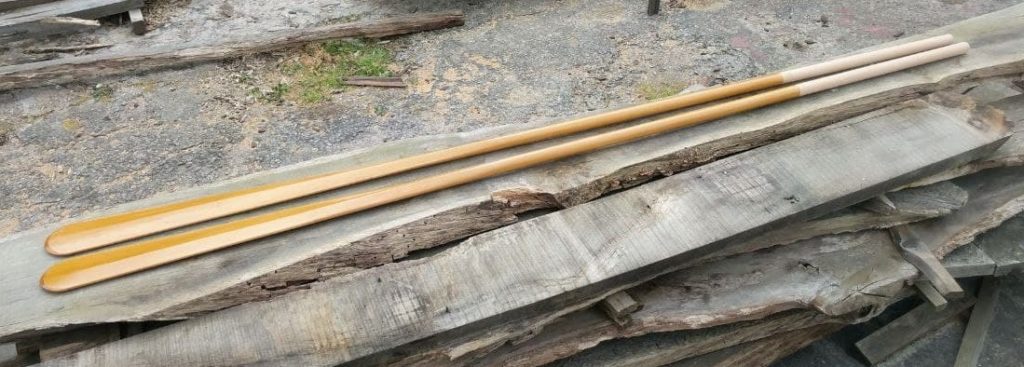
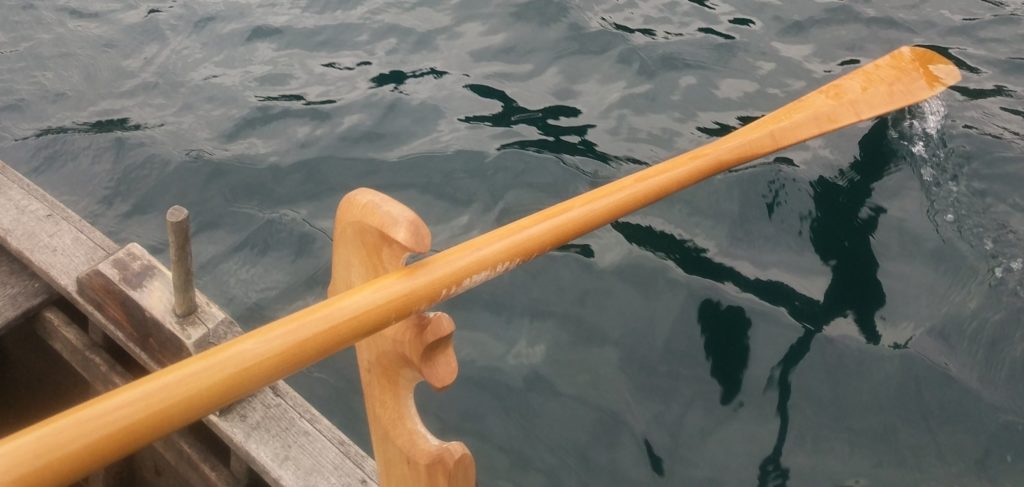
(note the “tolete”, the Basque oarlock, on this boat we borrowed for a sea-trial)

